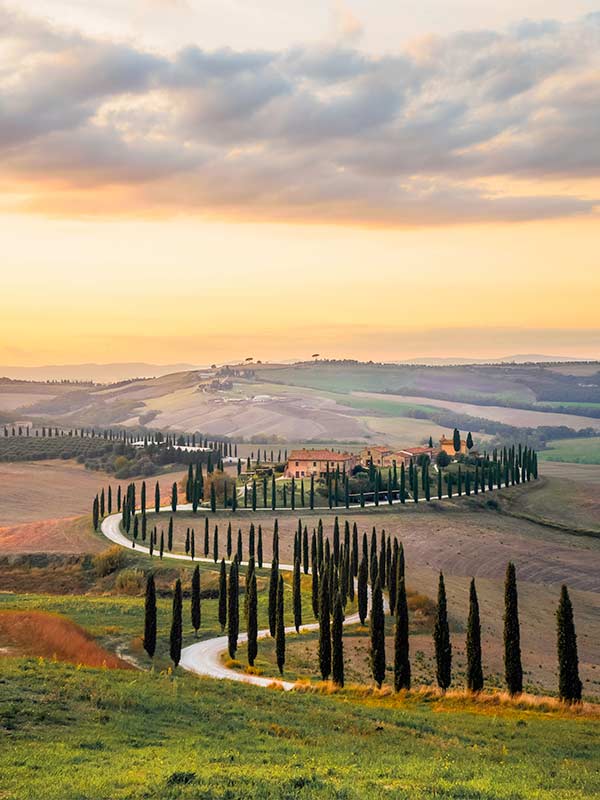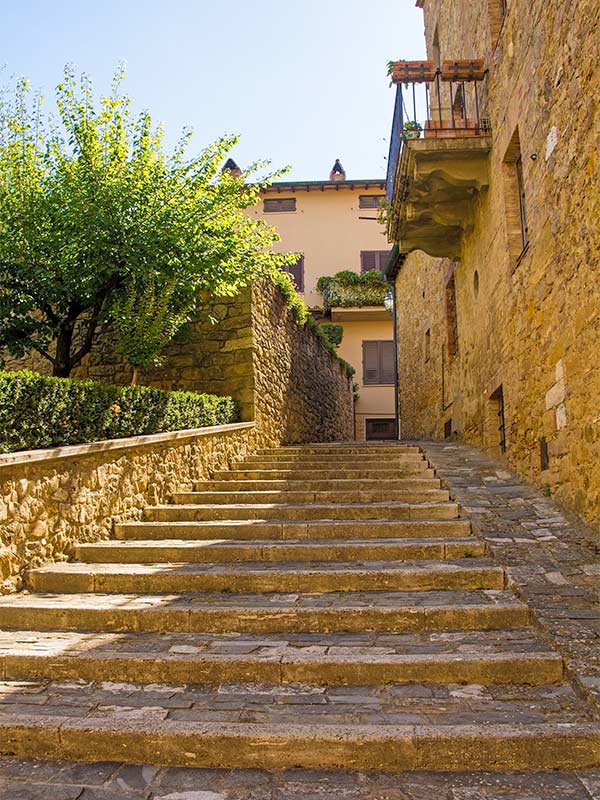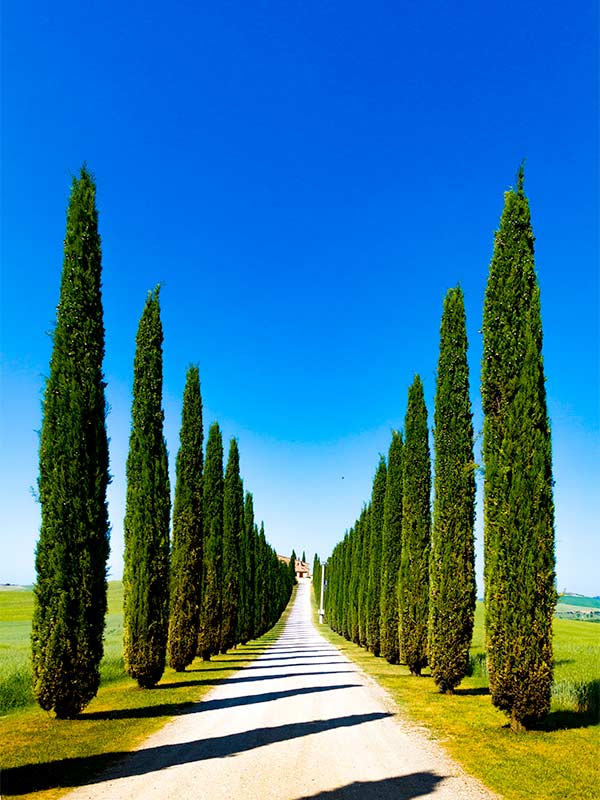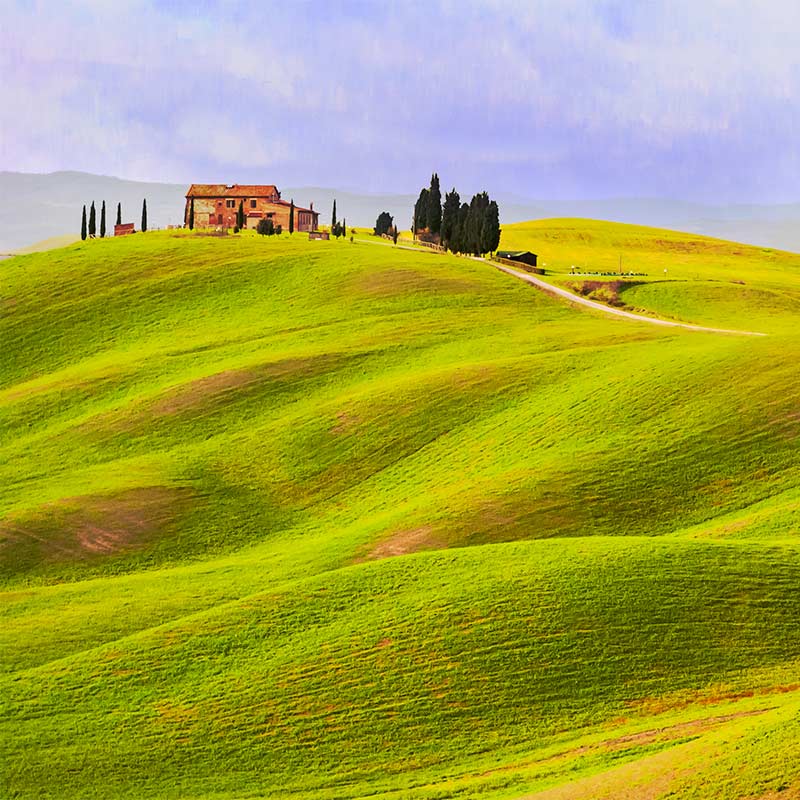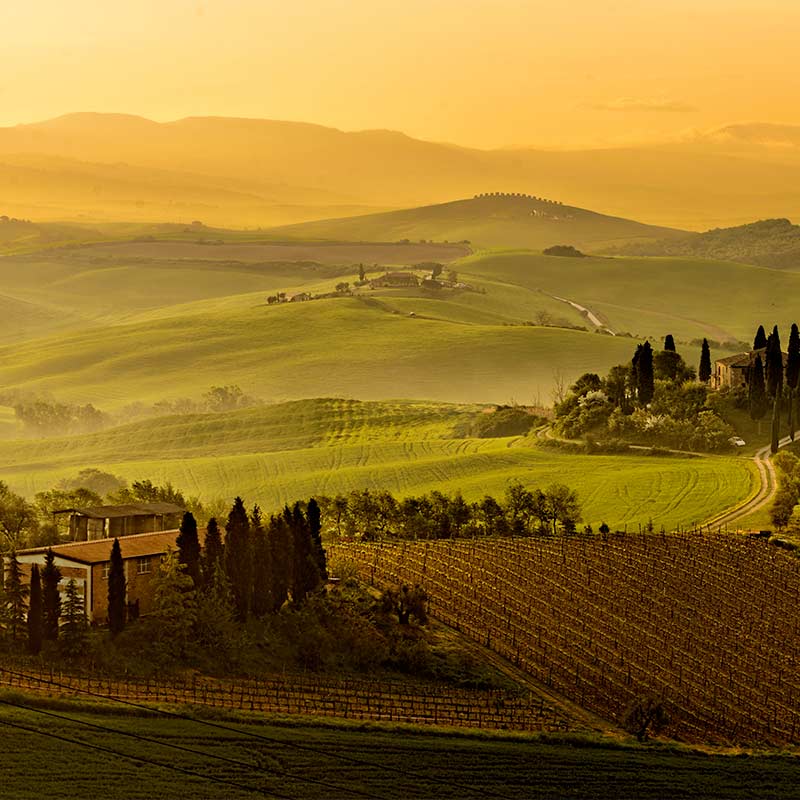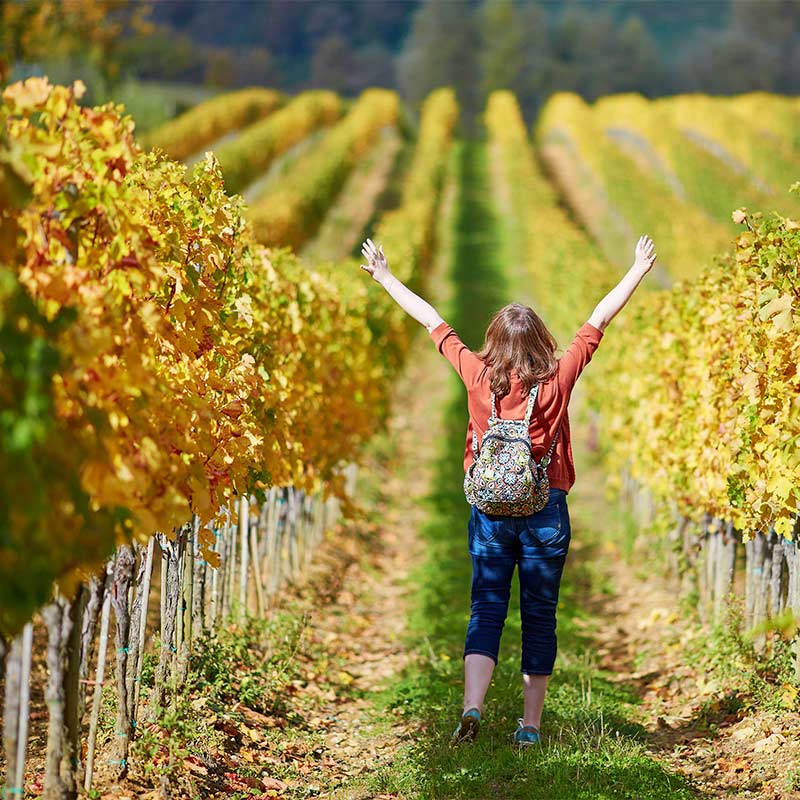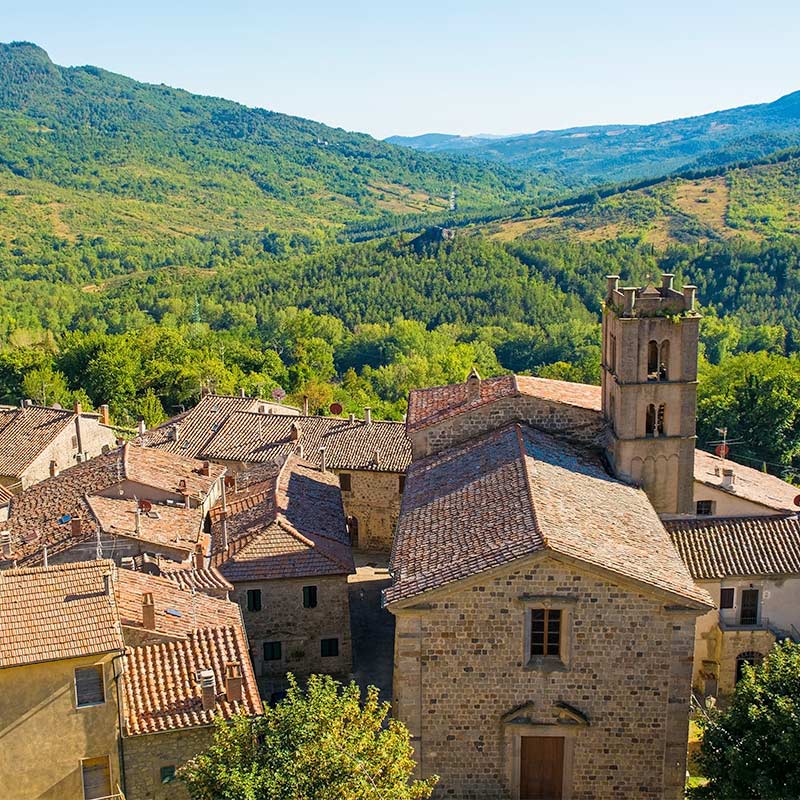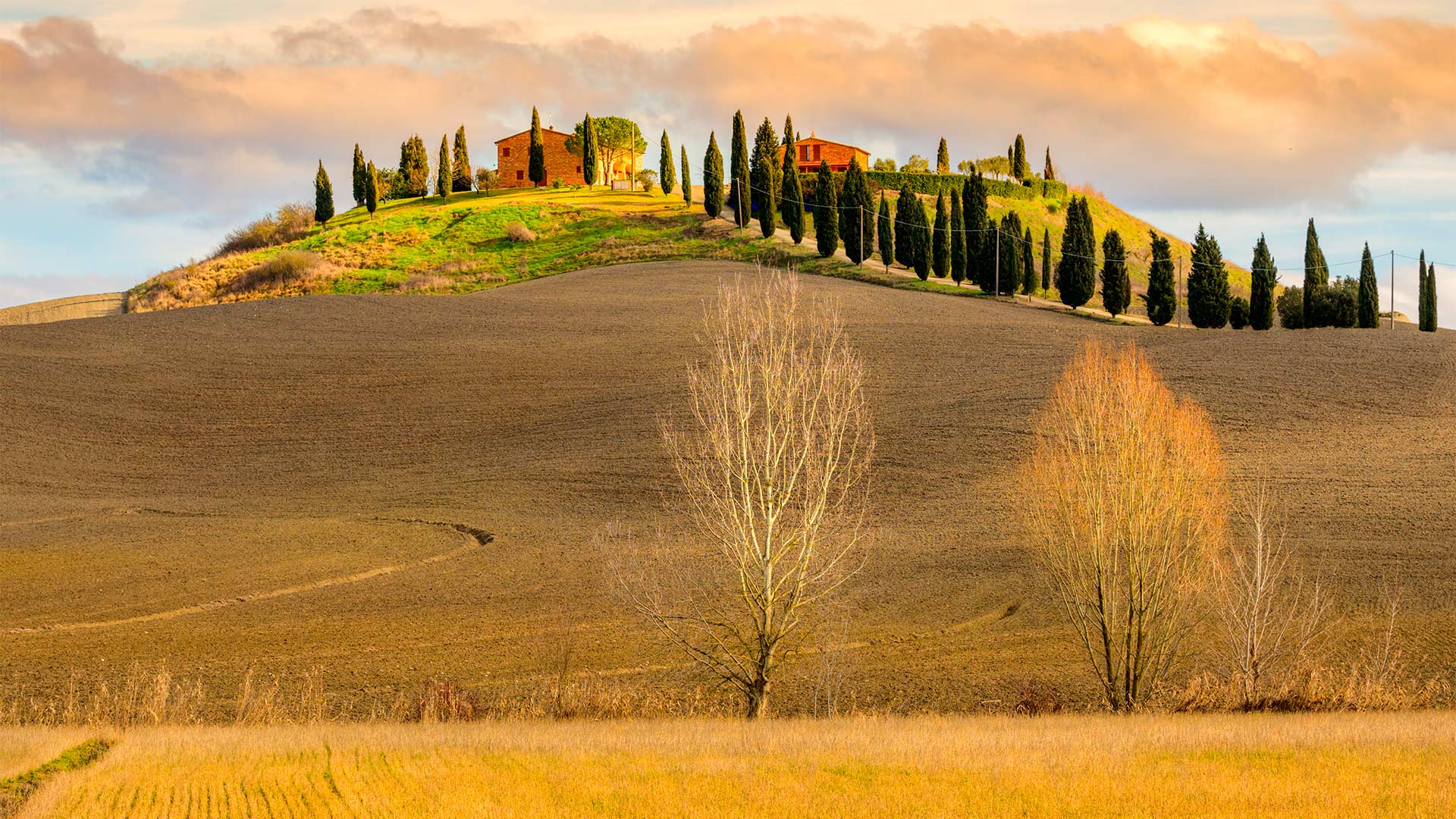
Val D’Orcia and Crete Senesi
An almost paradisiacal area of Italy, beautiful in all seasons and to be explored with a little time to spare by bike, motorbike or car ... preferably convertible (season permitting). The Val d’Orcia.
is one of those territories where the time dimension does not exist, but to be explored with sluggishness. Do you remember the images of The Twilight Saga: New Moon, those of a yellow Porsche 911, speeding along winding roads in an undulating, lush landscape towards Volterra? Or the glimpses and landscapes of soft hills surrounded by cypresses that the three characters cross in search of Lorenzo Bartolini (the young love of the protagonist Claire – Vanessa Redgrave) in the film Letters to Juliet? Or, again, the Elysian Fields imagined by the Maximus Decimus Meridius (Russel Crowe) in Ridley Scott’s “The Gladiator” or the exteriors of Anthony Minghella’s “The English Patient”?
When visiting the Val d’Orcia and the Crete Senesi it is easy to come across photographers stationed with their tripods on the ridges of the hills, waiting for the perfect moment to transform a photo into a masterpiece, or intent on finding that evocative foreshortening or scene from one of the many films that have been set here.
World Heritage Site
Between the harsh, rugged landscape of the Crete Senesi, grooved by gullies which, in autumn take on the appearance of amotionless blue-grey lunar sea due to the clayey soil of which they are made and the softer landscape of the hills where the Mediterranean maquis, vineyards, olive groves and mixed crops interchange and intersect in frescoes of rare beauty, this is one of the most beautiful valleys in the world.
The grace of this landscape has even been recognized by UNESCO which, in 2004, declared the Val d’Orcia a World Heritage Site because it is an «outstanding example of the redesign of the landscape in the Renaissance, illustrating the ideals of good governance during the 14th and 15th centuries of the Italian city-state and the aesthetic research that guided its conception».
The historic Via Francigena
Val d’Orcia and the Crete Senesi have bound their destinies to the Via Cassia, the great Roman road linking Rome with Northern Italy, and which crosses the two areas. A road that, for a great part of its route, follows the historic Via Francigena, where the meaning of the journey has the spirit of pilgrimage. The continuous transit of men and goods along this fundamental pathway decreed the importance of some of the towns in the area: Castiglione d’Orcia, Montalcino, Pienza, the Abbey of Sant’Antimo, Radicofani, Montepulciano and San Quirico d’Orcia are some of the best-known villages. The historic centre of Pienza was declared a UNESCO World Heritage Site in 1996.
The “ideal” city, with spaces and settings of evocative beauty, was desired by Enea Silvio Piccolomini who, having become the Pope under the name Pius II, wanted to rethink his native village, Corsignano. By entrusting the renovation to Bernardo di Matteo Gambardelli, known as Rossellino, an apprentice of the famous architect and scientist Leon Battista Alberti, the city represents the first application of humanistic concepts in urban planning. From medieval village to monumental centre, it is the realisation of a new vision of urban space.
Montalcino, on the other hand, is the homeland of Brunello di Montalcino, one of the most appreciated wines in the world. The lesser-known villages are also worth a visit. Magnificent spots and true hidden pearls, that also constitute a dive into a fascinating and richly-evocative past: Murlo, Buonconvento, Torrenieri, Contignano, Monticchiello, Sarteano, Rocca d’Orcia, Campiglia d’Orcia, Bagni San Filippo, Vivo d’Orcia and the suggestive Bagno Vignoni, an ancient thermal centre since Roman times, with what is elsewhere town square, here is a rectangular bath 49 metres long and 29 metres wide (54 yds long and 32 yds wide), from the bottom of which gush out hot springs.



